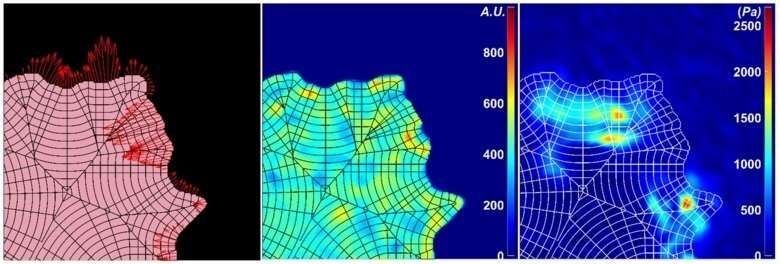How cells use a signaling molecule to sense their microenvironment

A new study by researchers at Karolinska Institutet shows that the local activity of the signaling molecule Rac1 controls cycles of microscopic protrusions and retractions of the cell membrane. The cell uses these cycles to sense its surroundings, which among other things affects the cell's ability to move. Understanding of the cellular and molecular mechanisms that control cell movements can help us to develop better diagnostics and treatment of various diseases such as cancer.
To sense their surroundings, cells use cycles in which microscopic cell protrusions are formed and retracted. The ability of cells to sense their surroundings is important for, among other things, the uptake of nutrients, but also for the cell's ability to move in a certain direction. The cell's ability to move is crucial for embryonic development and tissue repair, and in many disease states, such as when cancer cells spread (metastasize), as well as in inflammation and fibrosis. By understanding the cellular and molecular mechanisms that control cell movement, we can develop better diagnostics and treatment for cancer and other diseases.
"It is the local activity of the signaling molecule Rac1 that paradoxically controls both the protrusion and retraction of the microscopic cell membranes by switching between an active and an inactive state in different parts of the cycle," says Professor Staffan Strömblad, who together with his group at the Department of Biosciences and Nutrition, Karolinska Institutet, is responsible for the study. "We have also for the first time been able to show that Rac1 controls the mechanical forces between the cell and its attachment surface."
By studying living cells with high-resolution confocal microscopy, they have been able to measure Rac1's activity locally in the cells over time with the help of a fluorescent biosensor. At the same time, they have measured the traction forces that the cells exert onto their attachment surfaces with "traction force microscopy." With the help of a laser in the microscope, they have also been able to activate or block Rac1's activity locally in the cells by using a so-called optogenetic probe. Thereafter, the effects were measured locally in the cells' membranes over time with the help of advanced image analysis and statistical processing.
The next step for the group will be to see at the molecular level map how Rac1 can control both the protrusion and retraction of local cell membranes, and how Rac1 controls the cell's power-generating machinery.
More information: Jianjiang Hu et al, Local temporal Rac1-GTP nadirs and peaks restrict cell protrusions and retractions, Science Advances (2022). DOI: 10.1126/sciadv.abl3667. www.science.org/doi/10.1126/sciadv.abl3667
Journal information: Science Advances
Provided by Karolinska Institutet


















